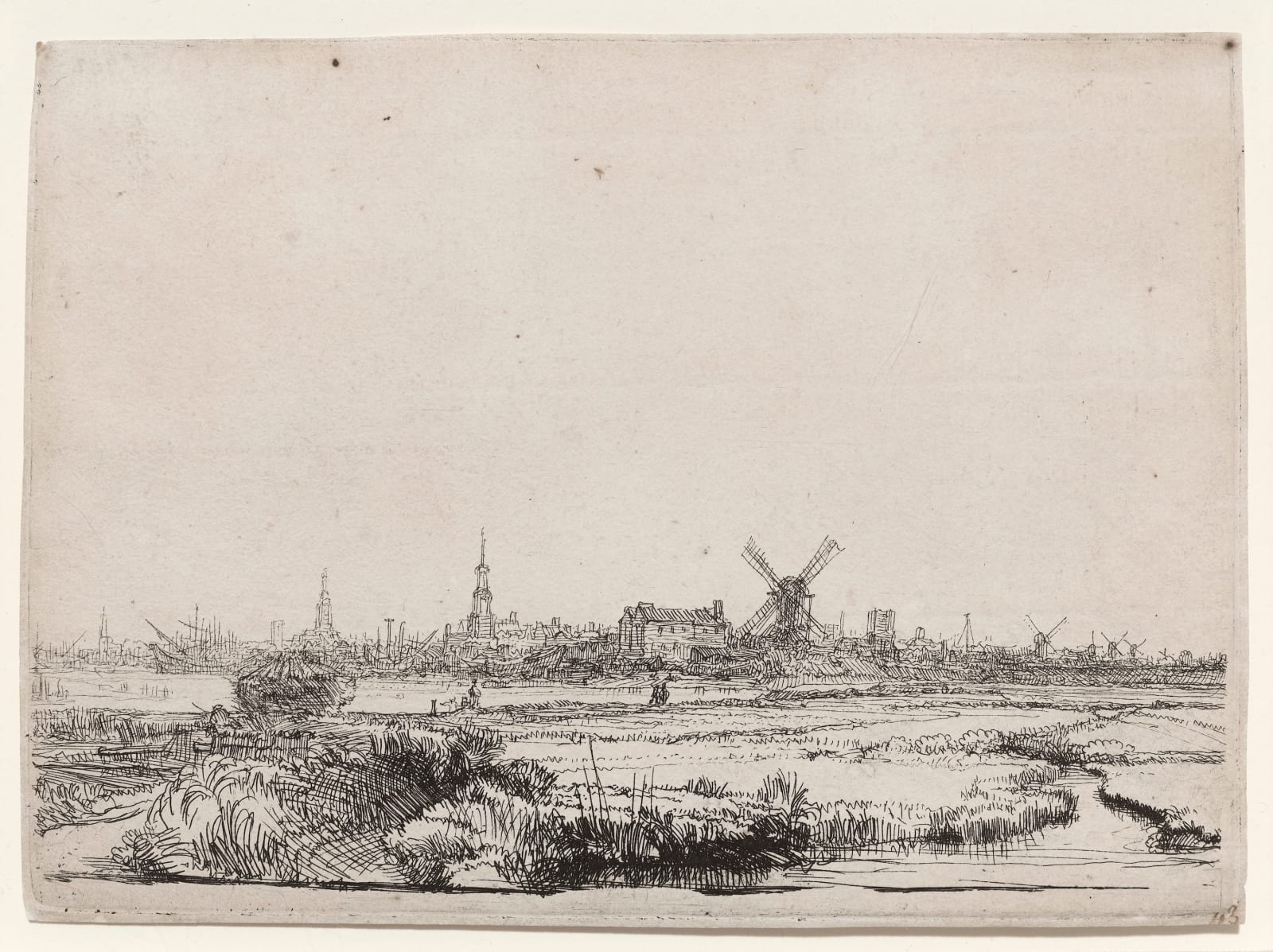Rembrandt van Rijn (1606-1669)
During his lifetime, Rembrandt’s extraordinary skills as a printmaker were the main source of his international fame. Unlike his high in demand paintings, the more affordable prints were accessible beyond the Dutch border. The international art market’s demand for scarce impressions has always been strong, but with so many prints now in public collections, it has never been higher.
Perhaps to honor his father, a miller, Rembrandt may have enjoyed adding the windmill to View of Amsterdam, his first landscape print. The early 1640s marked a flurry of landscape activity for him in and around his adopted city. Several etchings depict the area near the new house he and his wife Saskia bought in 1639. After her death in 1642, he may have consoled himself in the countryside.
Rembrandt’s View of Amsterdam achieves an extraordinary amount of depth despite the very low horizon, by pushing the reeds and other plants growing along the canal and the footpath very prominently into the foreground while the city appears diminutively small in the far distance. The tallest reed is rendered in the same size as the tallest spire of the Oude Kerk. In particular, Rembrandt understood how important the sky was for the depiction of this flat landscape, and by leaving the upper two thirds of the plate entirely blank he was able to convey a sense of the vastness of the sky.
For a relatively small plate, Rembrandt accomplished a remarkably wide vista, encompassing almost the entire city, although in mirror image. Eric Hinterding describes the recognisable landmarks from left to right: “the Haringspakkertoren, the Oude Kerk, the Montelbaanstoren, the warehouses and ships’ wharves of the Dutch East India Company and the mill on Het Rijzenhoofd bulwark.”[1]
That the panorama is shown in reverse points to the likelihood of Rembrandt drawing on the spot, directly onto the copper plate. Had he worked from a preparatory drawing, it would have been more likely that he would transfer the drawing onto the plate in order for it to print in the same direction. However, the fact that Rembrandt took some liberties with the actual topography indicate that he possibly reworked the view in the studio, rather than drawing an immediate observation outdoors onto the plate. Either way, View of Amsterdam from the Kadijk gives us an accomplished impression of Amsterdam.
[1] E. Hinterding, Rembrandt Etchings from the Frits Lugt Collection, 2008, no. 165, p. 284
Provenance
Wilhelm Koller (d. 1871), Vienna [Lugt 2632]
Private collection, New Jersey, 1990
David Tunick, Inc., New York
Private collection, New York
Literature
Bartsch 210Hollstein 210 only state
The New Hollstein: Dutch and Flemish etchings, engravings and woodcuts 1450-1700, 203 only state
Hind, A Catalogue of Rembrandt's Etchings; chronologically arranged and completely illustrated, 1923, 176
White & Boon, Rembrandt's Etchings: An Illustrated Critical Catalogue, 1969, 210
E. Hinterding, a.o., Rembrandt the Printmaker, 2000, 39



